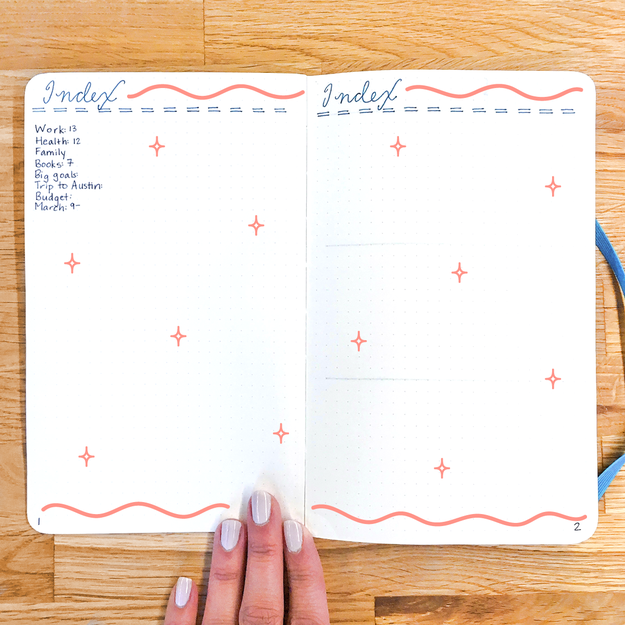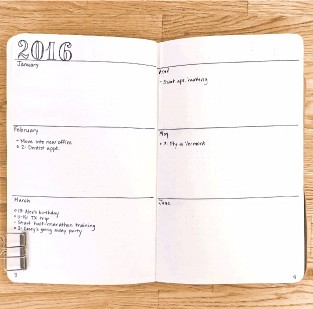Bullet journalling is a simple diary system created by Ryder Carroll, a product designer from New York. Bullet journalling is a practice that can be adapted to anyone from any walk of life, however, it’s especially helpful for students. It can seem like you have 1 million things to do. If you find yourself struggling to utilise your time, money and schedule wisely, then you’ll want to try this!
The bullet journal has been called ‘the analog system for the digital age’– it’s a new way of writing that deals with the busyness of the 21st century. It’s a great way to boost productivity as well as free up space in your brain for other things and active thinking!
All you need to get started is a notebook and a pen!
Let’s start!
First and foremost
Probably the most important part of your bullet journal will be your index. This is crucial to help you find things in your journal and get to them quickly! If your journal doesn’t have page numbers you can easily just write them in one of the corners of each page.
You want to leave about 5 pages for your index at the start of your bullet journal. This will just include page references e.g. ‘1-2: 6-monthly log’

Source: Buzzfeed
Future log
The idea of this journal is to have a systematic collection of your goals for each year, month and day. The future log includes an overview of the upcoming months. This is usually done in a 6-monthly way. Divide 2 pages into 6 and then write a heading for each month.
Under each month you can write down special events for each month like birthdays, holidays or big projects that are due! This helps you remember what you need to know for the future.

Source: Buzzfeed
Monthly log
The monthly log includes every single day of the month. You usually use two pages and write the month at the top of it. Along the side of the page, you would number the lines- one for each day of the month. Next to these numbers you can use M, T, W, etc. to note which day of the week this date it.
Here you can plan for the month. You can write down due dates for assessments, coffee dates or other important things for the month ahead.

Source: Buzzfeed
Rapid logging
This is the fine end of bullet journaling- the daily rapid logging. Rapid logging works by creating a series of dot points for each day. It’s to-do list, event list as well as somewhere you can jot down any random thoughts for the day.
Rapid logging works by using a key. Instead of having a simple bullet • for every note, you have different bullets to help you organise your thoughts.
• a bullet point denotes a task e.g. take the bins out
x when you complete a task, you draw an ‘x’ over the dot point
> if you don’t have time to finish your task, you draw this over it to signal you’ll shift it to the next day
< or, you can move it to the monthly log and do it later in the month.
o an empty circle denotes an event
– a dash is for a note, maybe an interesting quote you heard in literature.
This system seems complicated but once you get your head around it, rapid logging becomes, well, rapid. It’s an easy way to organise your thoughts and tasks to make sure you complete everything when you need to.

Source: Buzzfeed
I still don’t get it…
This can all seem a little complicated and unnecessary but once you start, you’ll realise what a life-saver it is! There are tonnes of YouTubers making videos about bullet journaling. These are just the basics so it’s interesting to see how different-minded people implement the same system for different purposes.
Watching this video will probably give you a better idea of what this is all about!
It seems like one of the hardest things about going to school is staying on top of all the mountains of study and homework you have to do. So, if one of your resolutions is to become more organised, definitely try implementing this system in your life! If you’re already bullet journaling, tell us about how you do it in the comments below!
As a little extra inspiration, here are some of our favourite bullet journal flip-throughs on YouTube:






